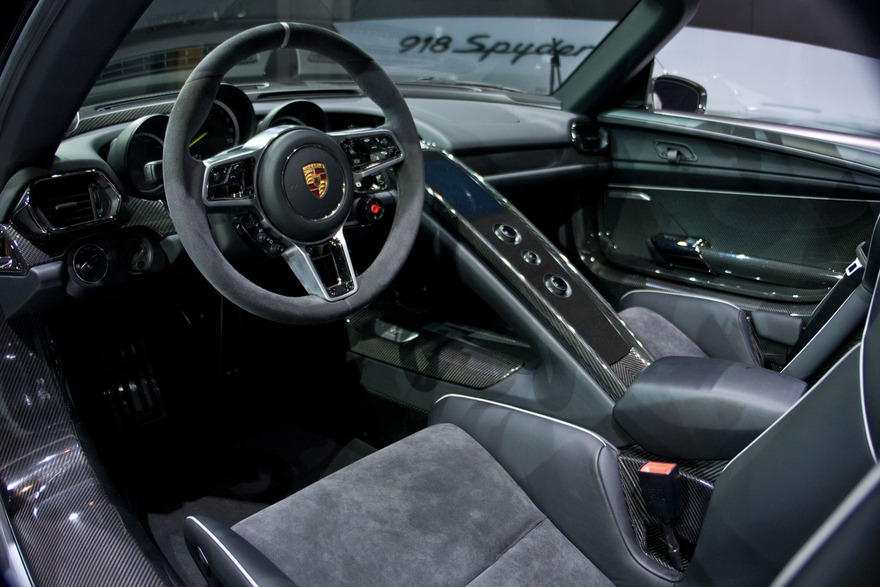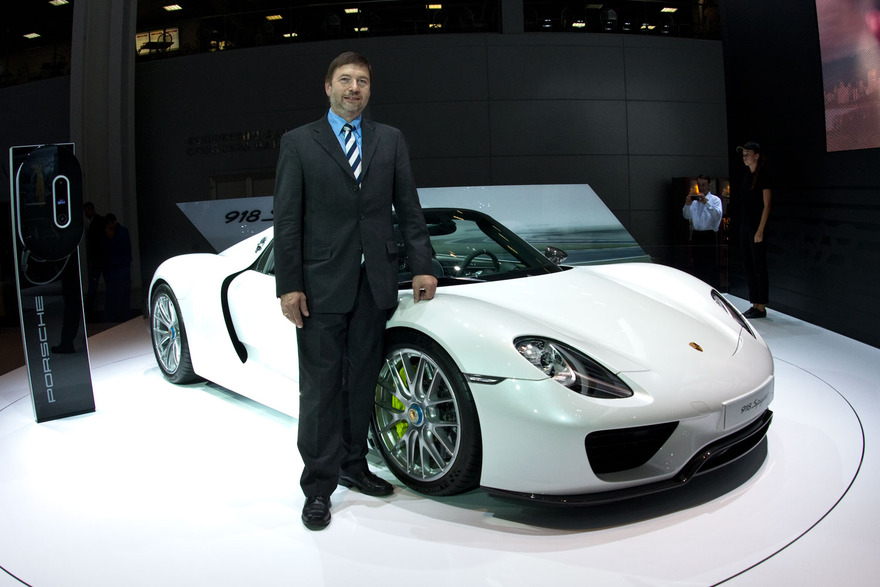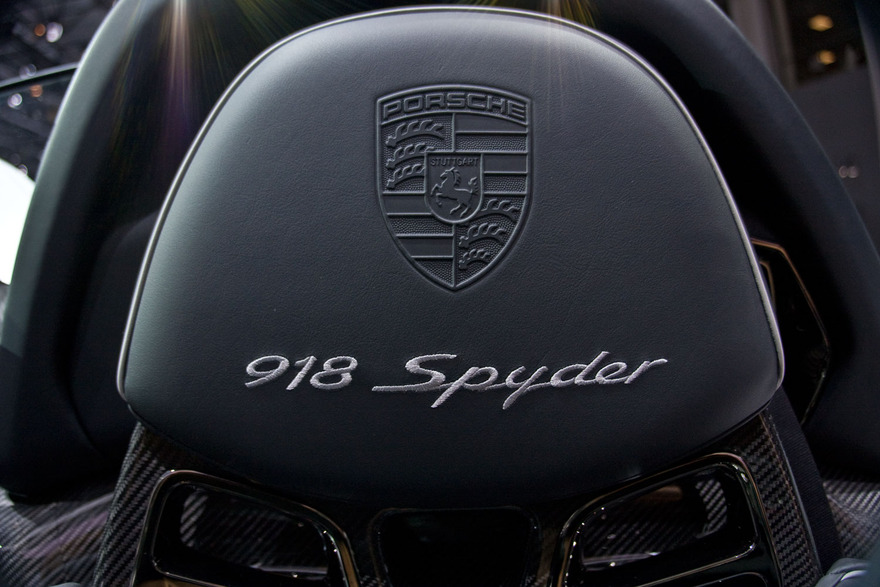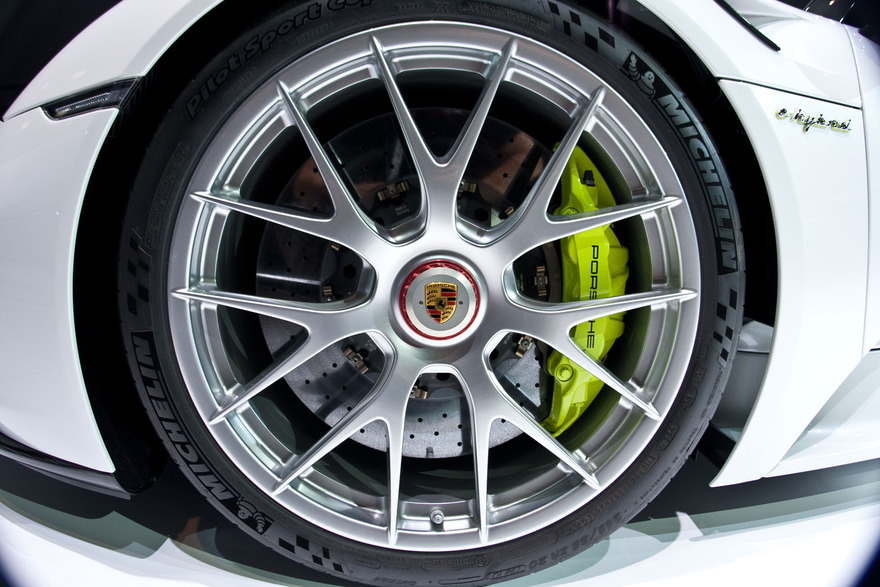Even though this car has already been displayed many times at various motor shows, it always creates a furore. On the one hand, its utterly beautiful futuristic shapes are reminiscent of a spacecraft, on the other hand, knowing it’s a Porsche makes you want to get behind its wheel and give it a try.
Apart from everything else, I’ve always been curious how this wonderful car was built and what steps were taken to create this impressive feat of engineering.
The conceptual design of the Porsche 918 Hybrid was first tested in the Porsche 911 GT3 R Hybrid racing prototype in 2010. Particularly, in May 2011, the GT3 R Hybrid took part in the most popular endurance race in Germany — the 24 Hours Nürburgring — where it claimed victory in its category. The 918 roadster («918 Spyder») was first revealed as a concept at the 2010 Geneva Motor Show. Developing the concept of a mid-engine Porsche 918 — from first sketches to building a full-scale model — took just 5 months.
The organisers of the recent Moscow International Motor Show held at the Crocus Expo could not resist the temptation to show the 918. In my turn, I was not able to resist the temptation to interview Michael Hoelscher, the 918's technical project manager, who came to Moscow to unveil the car.
Herr Hoelscher is the technical director for the Porsche 918 Hybrid project; he supervises the work in the sphere of technological and intellectual solutions. It is noteworthy that the Porsche 918 project followed his previous work on the Carrera GT and many of its technologies were adopted for the 918. Unfortunately, my wishes to Herr Hoelscher to head yet another fascinating project after the Carrera GT and Porsche 918 Hybrid turned out to be unrealizable as this top-ranked specialist decided to end his professional career.
This made our conversation even more interesting.
How did the story of this incredible car begin?
It has become a tradition at Porsche to develop a sports car every 10 years. Our previous project was the Carrera GT and I can remember clearly well the moment it left productions lines, while I was in the process of composing a showcase for its successor. I should say that each new supercar always features standard characteristics: it is faster, more powerful, and more refined.
As a company, we face several important challenges: on the one hand, we need to prove that we can produce the best and most powerful cars. But on the other hand, we need to demonstrate that we don’t just pay lip service to our responsibility concerning preserving natural resources and keeping the environment clean. The Porsche 918 Hybrid is an example demonstrating that it is possible to implement both of these conflicting tasks in one car.
At that moment, we were able to build the fastest road-legal car to lap the Nordschleife. And we consider it to be the primary and most important criterion to test the sports car’s quality and consistency. But we also had to comply with fuel consumption standards applied to the most fuel-efficient vehicles. It became clear that in order to accomplish all our goals we needed to begin the project from the ground up. At that time, we had enough knowledge to develop a concept model using hybrid technology, so we raised this question to the Board of Directors. Amazingly, we were given the green light, but with one condition — we were to reveal the new concept car to the public in 2010.
Are technologies used in the 918 Hybrid comparable to those used in the 911 GT3 R Hybrid prototype?
Those are two different cars based on different technologies and platforms. They cannot be similar to each other as they complete different missions. Particularly, the distance one can travel purely on battery power is different for the road-going and track-focused cars. According to legal rules and regulations, this distance should not be less than 25 km for a street-legal vehicle. As for the race cars, as you will appreciate, this number is absolutely insignificant. However, these cars do share a common feature — they were developed by same engineers, who have actually introduced the know-how worked out for the GT3 project into the 918 Hybrid project, and after that, the new technologies migrated into the Porsche 919 project. Then later, part of these technologies found their way in production vehicles.
I know how important is the Nürburgring Nordschleife lap time for German car manufacturers in general and your company in particular. I also know that the 918 set the best time of 6:57 min. That is an incredible result. But initially, were you setting any specific objectives, any time limits?
From the very beginning, our key requirement for the car was to outperform the Carrera GT, which set the lap time of 7:32 min. However, the GT2 RS was also fast — 7:24 min. Consequently, the 918 had to become even faster. In 2012, the 918 prototype lapped the Nordschleife in 7:14 min given that it has not been completed by that time. We hoped to go below 7 minutes; however, that wasn’t an easy task. In September 2013, we returned to the Nordschleife. Those were two most emotional days while working on this hybrid car. 6:57 min!!! That has been hard work.
Do you have any further plans on building the next supercar? If yes, when should we expect it? In another seven years?
First of all, even if we had any plans, we would not discuss them here. Secondly, based on our experience, in ten years the market will be ready to accept an absolutely different car. It will take time to understand the new requirements; it’s too early now. I suppose that the next concept car will look completely different. But one thing I know for sure is that its major objective will remain the same — to be the fastest production sports car to lap the Nürburgring.
What type of customer is this model intended for?
This car is sold all over the world. Most commonly, it is not subject to any technical modifications, apart from the United States. The only exception are the countries where the left-hand drive configuration is forbidden.
As for its price… Well, it is very expensive. But you can think about this question differently. One should realise that developing a car like that was not a low-budget project. We conducted a number of costly tests and trials. It’s one thing when they are conducted for a production series of 150,000 cars, and it’s totally another when it comes to a limited edition of 918 units.
The final price of the car is calculated based on the expected project’s payout. You can ask a question: what product can I pay so much money for? Or you may put it this way: if I pay so much money, WHAT will I get?
Sure enough, we do have competitors. But it’s for you to decide whether they offer MORE and something BETTER than we do.
How many units have already been produced?
We undertook a commitment to produce 918 units. Right now, we are manufacturing 4 cars a day. That’s a good pace taking into account we had to train the employees first and put them in the picture. Only after that, we can ramp up production. Currently, we have produced one-third of the total number.
Is there a waiting list for these cars, how fast a client can get one?
A client will have to wait for the car for about a year; however, all of them have already been pre-ordered.
How are these cars produced? For instance, where are the bodyshells or the engines built?
We try to find the best suppliers of materials and components for each specific technology. If we talk about carbon fibre, we use 6 different technologies. For each of them we choose an individual agent with its own specification. As an example, we receive carbon fibre from Austria, Great Britain, Slovenia, and China. Radiators, which are actually the most long-travelling units, are delivered from Australia. Whenever possible, we try to find someone nearby.
As for the bodyshell, it is built using racing technology. It features a monocoque produced by an Austrian company. An engine is mounted to a frame manufactured in Germany. Mounted body parts like wings and bonnets come from the United Kingdom. As for the engine, its cast parts are made in Germany. The driveshaft also comes from Germany, rods are made in Austria, while the pistons arrive from the United States. We took the world’s best spare parts.
What kind of future do you wish for this car?
This car can be used both on the racing rack and in everyday life. Like any Porsche, actually. We know personally the majority of our clients and we are sure they will not exchange or give away this car, they will drive it. Others treat this car like a museum showpiece and the mileage of such cars will not exceed 5,000 km even in 5 years.
As for the other side of the question, I know that some of the technologies and know-how used in the Porsche 918 Hybrid will be adopted for the new models. In this way, we will be able to transfer all technologies we developed when working on this model to simpler and less sporty models all the way to Boxster so that all our clients could enjoy the sports technologies of the future.













